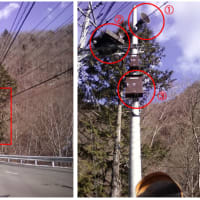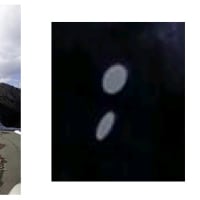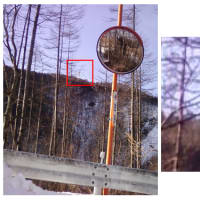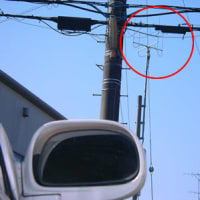[Stanley Allen Meyer Page 8]
EVGRAY,
like Meyers was also killed. We at panacea feel that the granted
research and development center is needed to create social reform, as
the public will know why its there and what subject matter goes on
there, the main stream faculties can also benefit from the
organizations findings and research and development., but we need
grants to survive. In the Mean time, any experimenters can replicate
the open sourced findings of this and other technologies which are made
available on the panacea online university.
[理念と大学の話、要約は、「寄付してください」 ですので省略]
[Stanley Allen Meyer Page 9-12]
Replication
To
achieve Ravi's efficiency, a strict selection and preparation of
stainless steel tubing is important.The following parameters need to be
considered.
(1) Choice of the grade of stainless steel
(2) Tube gap and Thickness / SWG / AWG of tubes
(3)Pre preparation and conditioning [This sanding is typically done by hand or on a belt sander using 60 or 80 grit sandpaper.]
ラビ氏のセルを複製するにはステンレス鋼管の厳密な選択、および調整をすることが重要です。次のパラメータを考慮する必要があります。
(1)ステンレス鋼のグレードの選択
(2)管のギャップと肉厚/SWG(British Standard Wire Gauge)/AWG(American Wire Gauge)断面積あたりの抵抗値
(3)前準備および調節、[一般に、60番または80番のサンドペーパーを使って手またはベルト研磨機によりされます。]
Choice of the grade of stainless steel
Stan
said he used T304 in line 52 of patent # 4936961. Ravi's choice was to
use 316L seamless pipes. Use ONLY SEAMLESS PIPES and not seam welded.
These
tubes were annealed for 3 hours in inert atmosphere of Argon to remove
all residual magnetism and cold work stresses before they were
assembled. Even Nitrogen can be used as the inert atmosphere. The tubes
are annealed to get rid of the crystal lattice imperfections induced
due to cold work and any traces of residual magnetism. They have to be
in bright finish only you don't want oxides of nickel chromium or iron on the surface (more details in preparation below).
スタン氏の特許#4,936,961[http://www.nogw.com/download2/-9_meyer_water_electrolysis2.pdf]6ページのライン52にT304を使用したと書いてあります。
ラ
ビ氏の選択は、316Lシームレス・パイプを使用することでした。ステンレス板を丸めて継ぎ目を溶接したパイプではなく、シームレス・パイプを使用してく
ださい。SUS316Lシームレス・パイプは、すべての残留磁気を取り除かれ、冷間引抜加工後、アルゴン不活性雰囲気の中で3時間焼きなまされたもので
す。不活性雰囲気として、窒素も使用することができます。チューブは、冷間加工することによって引き起こされる結晶格子欠陥と残留磁気を取り除くために焼
きなまされます。ニッケル、クロムまたは、鉄の酸化物を表面から取り除き、輝いた仕上げにする必要があります。(下での準備で詳細)
One needs to find out if there is any Aluminium content in the grade.
If
the aluminum content is less than 0.5 Wt% or nil, you could use this if
it is easily available in seamless form and your required size.
あ
なたは、ステンレス300番台(クロム・ニッケル系)のほとんどを使用できますが、316Lが最も望ましいでしょう、そして、次の候補は、304Lでしょ
う。ステンレス310は、300シリーズの中で最も高い抵抗率を持っているので、決して使用しないでください。それらの抵抗の高い係数のためまた、インコ
ネルグレードパイプを避けてください。(高いNickel含有量)[インコネル:スペシャルメタル社の商品名、ニッケル76%にクロム16%,鉄8%を加えた合金。耐熱・耐食性にすぐれ,900℃以上でも酸化されない。ケイ素を加えて鋳造用としたもの,チタンまたはモリブデンを加えて機械的性質を向上させたものもある。]316
と316Lの間にも、炭素含有量の違いにより抵抗率の違いがあります。継ぎ目の溶接によって、管の長さ方向に沿って溶接ラインは磁化します。機械加工/切
断/サンディングの後、組み立てる前に、もう一度、それらを焼きなます必要があります。もし316Lステンレスで考えるならば、モリブデン、ニッケル、お
よびクロムのわずかな増加は、素材の電気抵抗をわずかに増大させるが、厚さを増すことでこの問題を相殺できます。もしグレードにいくらかのアルミニウムの
入っているものがあるならば、調査する必要があります。もしアルミニウム含有量が0.5wt%(重量百分率)未満またはゼロで、シームレスタイプの必要な
サイズが容易に入手可能ならば、これを使うことができます。
The reason
why you need to check for Aluminum content is that it is used as a
deoxidizer during the melting and alloying process. So there is a
possibility of it remaining in trace amounts based on the amount of O2
available in the bath for it to turn to Alumina and float up in the
slag. Aluminum is
the main component in Fe-Cr-Al alloys which
increases the electrical specific resistance. Incase these
manufacturers use Cerium mischmetal or some other Rare Earths for
deoxidizing, we don't even need to consider Al. The 316L seamless tubes
Ravi used were sourced from a retailer of Sandvik, Sweden'.
[日本では、316Lステンレスの入手が容易ですので、アルミニウム含有のステンレスの説明は省略。316Lのシームレスパイプの選択でよいでしょう。http://www.silicolloy.co.jp/sus316L.html ] ラビ氏が使った316Lシームレスな管は、Sandvik(スウェーデン)の小売店から購入したものでした。
Using 304
Stan
claimed he was using T-304 SS. As there is no caustic electrolyte as
such, is right to say that 304 grade s/s can be used. However, expect
there to be a good deal of brown gunk generated during the conditioning
process, with the additional part coming from the 304 material. There
are some higher percentages of Ni and Cr in 316 and 2% of Molybdenum.
Some
of the manufacturers use Cerium Mischmetal (Rare earths) during the
melting and pouring operations and this is done in the more expensive
alloys like 316 to increase the hot life and the surface layer strength
and in case of seamless tubes a little extra silicon is added for free
flow in hot condition (Hot Extrusion of seamless tubes).
スタン氏は、T-304SSを使用していたと主張しました。苛性の電解質が全くないので、304のグレードs/sが使われうると言う判断は正しいです。
し
かしながら、コンディショニング過程の間に、304素材から多くの茶色のぬるぬるしたものが発生することを想定しておいてください。316には、Niと
Crが高い割合で含まれており、モリブデンは2%です。製造メーカーのうちのいくつかが、316のようにより高価な合金において、セリウムミッシュメタル[複数の希土類元素でセリウムは鉄鋼添加剤:フェロセリウムとしてステンレス鋼などの硫黄や酸素原子による還元作用を、酸化作用で抑制する] を溶融操作で注ぎ、そして、表面層の強さが必要な場合と、シームレスチューブの場合は、少し余分にシリコンを添加し加工しやすくします。(シームレスな管の熱い押し出し)
All
these put together add up to different metallurgical properties of the
material in our case. When in hot condition the Rare Earths, Silicon,
Molybdenum tends to migrate owards the surfaces of the metal and this
helps in the formation of a strong protective surface layer (The reason
why I said annealing was important). SS 316L is the only SS that can be
used in human Medical Implants other than titanium, that's how stable
316L grade is.
In summary -The best grade of SS to use is 316L. Next preference is 316,304L and 304. L stands for Low Carbon in the SS alloy.
これらすべてをまとめ私達の場合には、素材に異なる金属的性質を追加します。
高
温の条件下では特に希土類、シリコン、モリブデンは、金属表層に移動する傾向があり、これは、強い保護する表面層の形成において役立ちます。(私が、焼き
なましが重要だと言った理由)SS316Lは、チタンを除いて医療インプラントで使われうる唯一のSSであり、そこから、どれほど316Lグレードが安定
しているかわかります。要約すると、SSの中で最高グレードは316Lです。次に良いのが、316、304Lと304です。
「L」は、SS合金の低炭素(LowCarbon)を表します。





















